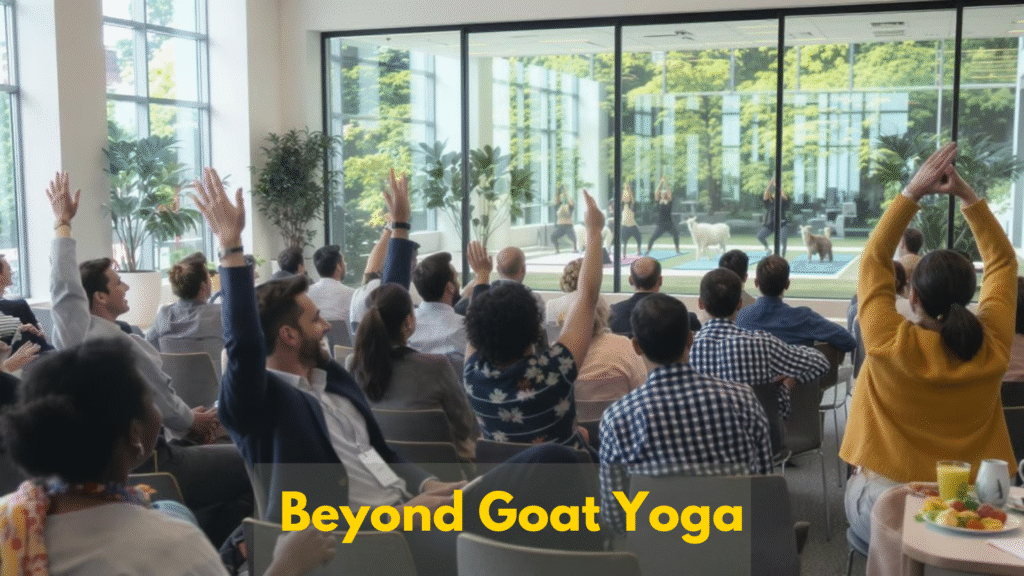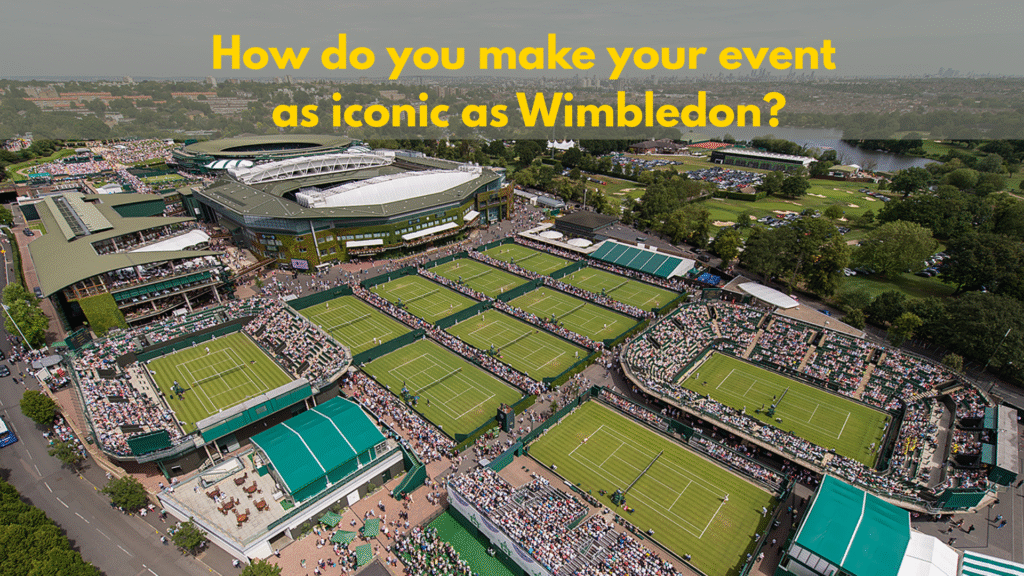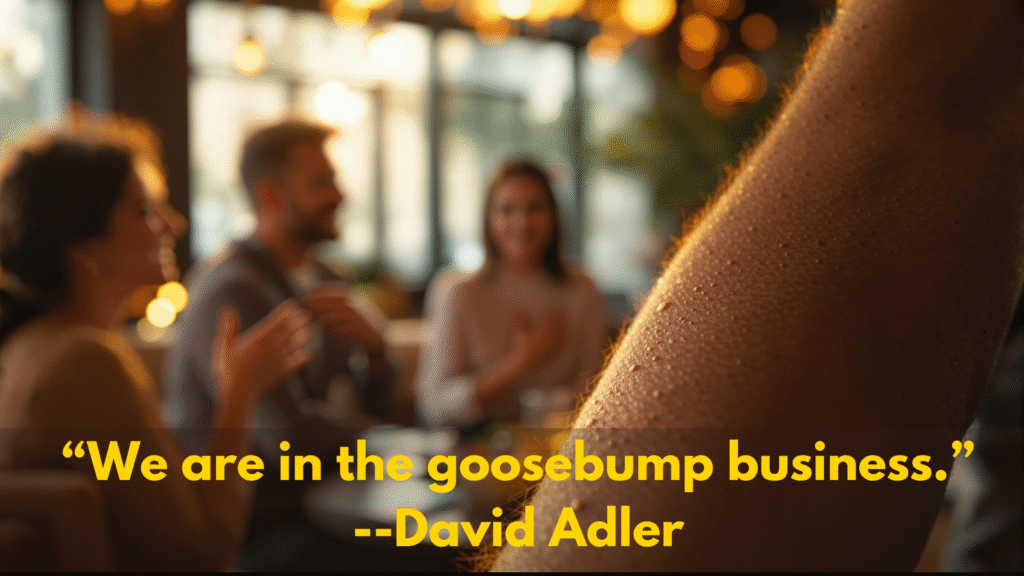Most conferences leave attendees drained, sore, and in desperate need of a nap.
But what if your event could send people home energized, focused, and raving about the experience?
I recently sat down with wellness architect David Stevens and two-minute movement queen Lizzie Williamson to explore how movement, nutrition, and mindful programming can transform your event outcomes. And we’re not talking about token yoga sessions (with or without goats). We’re talking about science-backed, budget-friendly changes that improve retention, connection, and ROI.
Why Wellness Belongs on the Main Stage
Wellness at events isn’t a trend or a nice-to-have. It’s a measurable business driver. When attendees feel physically and mentally better, they:
- Engage more deeply in sessions
- Retain and apply more of what they’ve learned
- Build stronger, more meaningful connections
- Rate the event higher in post-event surveys (including NPS)
- Leave energized and ready to return next year
Ignoring wellness is like investing months in a keynote only to present it to an audience that’s half-asleep.
The Science That Sells It to Skeptics
David and Lizzie didn’t just bring opinions—they brought research. Here are some highlights:
- Hope Molecules: When we move, our muscles release myokines—nicknamed “hope molecules”—which increase feelings of optimism and social connection.
- BDNF (“Brain Fertilizer”): Short bursts of movement increase Brain-Derived Neurotrophic Factor, which boosts focus, memory, and creativity for hours afterward.
- Blood Sugar & Hydration: Continental breakfasts spike and crash blood sugar, undermining focus. Protein-rich meals and steady hydration improve learning and energy.
- Micro-Movements Matter: Even two minutes of stretching, air squats, or walking in place can reduce fatigue and improve mood.
The Four M’s of Energized Events
David’s framework for event wellness is simple but powerful:
- Mindfulness – Be intentional about the attendee journey, from sleep schedules to networking flow.
- Movement – Use short, inclusive activities to keep people physically engaged.
- Meals – Offer food and drink that fuel focus, not just fill stomachs.
- Meaning – Connect attendees with each other, the local culture, or a cause.
Overcoming the “We’ve Always Done It This Way” Objection
Both David and Lizzie hear the same pushback:
“It’s too disruptive.”
“People won’t do it.”
“We can’t fit it in the agenda.”
The truth? You can create massive impact in two to five minutes without derailing your program. In fact, those short resets often make the rest of your agenda more effective.
From Slumped to Sparked
As Lizzie puts it, you can picture two audiences:
- Audience A: Slumped in chairs, stifling yawns, scrolling phones.
- Audience B: Sitting tall, smiling, focused, and engaged.
The difference between the two isn’t magic—it’s science. And the cost of ignoring it is high: less learning, weaker connections, and lower likelihood of return.
Ready to Move Beyond Goat Yoga?
If you want your next event to be the one attendees talk about for all the right reasons, start thinking about wellness as a strategic advantage—not a sideshow.
It’s time to design events that send people home better than they arrived.
Your Turn
Have you tried integrating wellness into your events? What’s worked—and what flopped? Share your experiences in the comments
Contact David and Lizzie
David T Stevens:
- https://www.linkedin.com/in/davidtstevens/
- https://www.olympianmeeting.com/who-we-are
Lizzie Williamson
- https://www.linkedin.com/in/lizzie-williamson/
- https://www.lizziewilliamson.com


